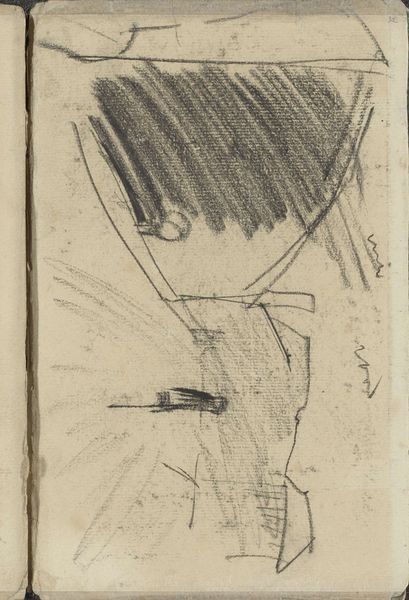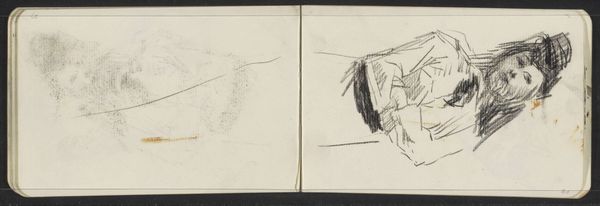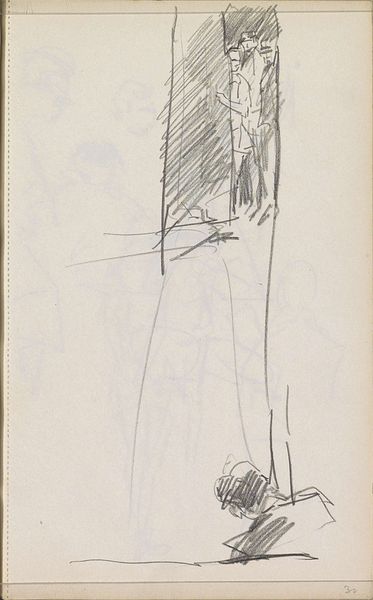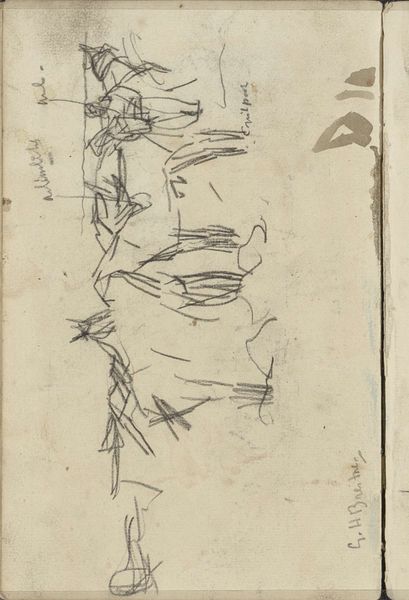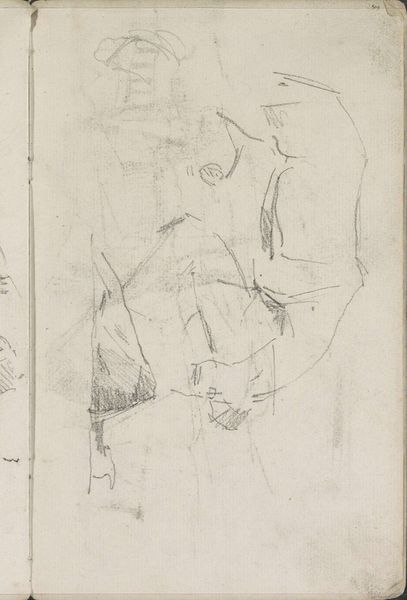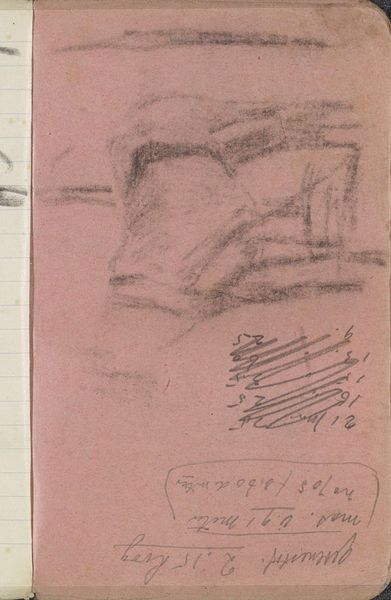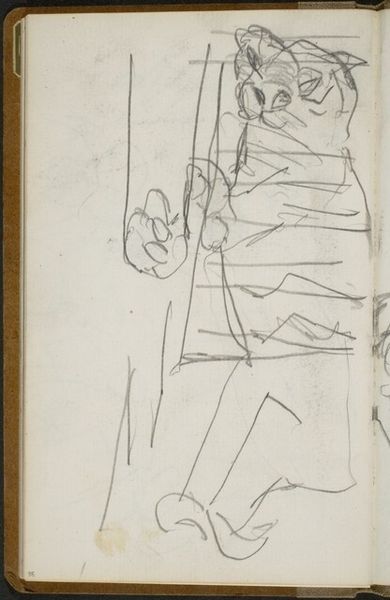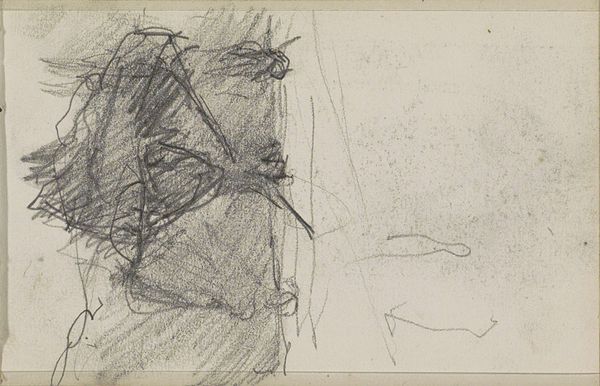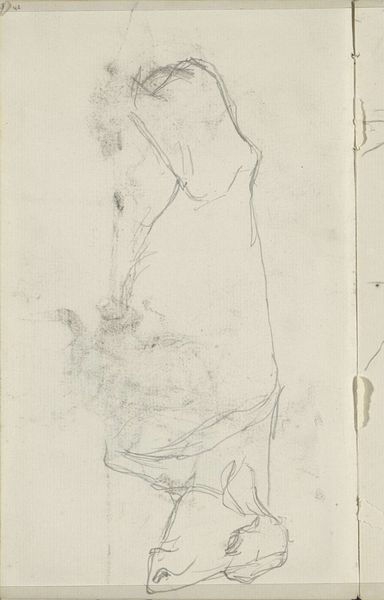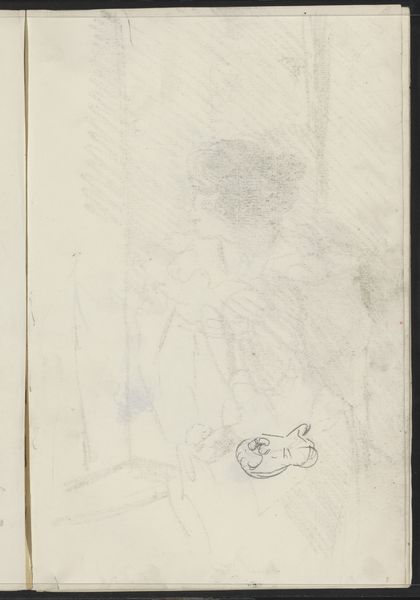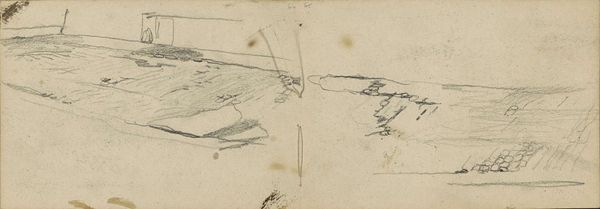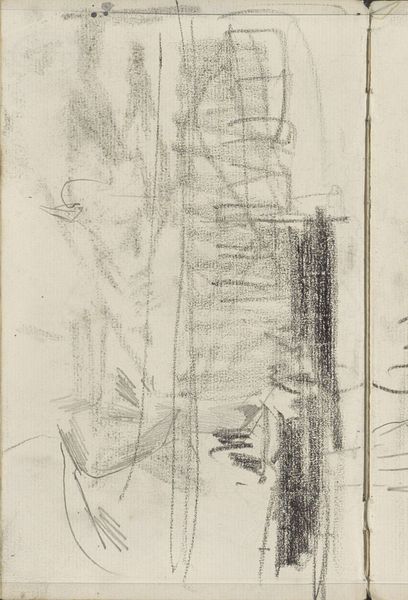
Urker vrouw in zondagse kleding en een kop van een meisje in Volendamse klederdracht 1875
0:00
0:00
drawing, pencil
#
portrait
#
drawing
#
light pencil work
#
quirky sketch
#
incomplete sketchy
#
personal sketchbook
#
idea generation sketch
#
sketchwork
#
pen-ink sketch
#
pencil
#
sketchbook drawing
#
genre-painting
#
sketchbook art
#
initial sketch
Copyright: Rijks Museum: Open Domain
Editor: Here we have a pencil drawing from 1875 by George Clausen. It's titled "Urker vrouw in zondagse kleding en een kop van een meisje in Volendamse klederdracht," which translates to "Urk Woman in Sunday clothes and a head of a girl in Volendam costume." The quick lines suggest movement and the fleeting nature of the sketch. How do you interpret this work within the context of 19th-century Dutch society? Curator: This sketch offers a fascinating glimpse into the artist's process but also opens up discussions about representation and the gaze. Clausen, like many artists of his time, was drawn to the perceived "authenticity" of rural life and traditional costumes. The women of Urk and Volendam were often depicted as symbols of Dutch heritage. How do we reconcile that romantic idealization with the reality of their lives and potential objectification? Editor: So, is Clausen contributing to or challenging stereotypes with his sketch? Curator: It’s complex, isn’t it? We must look at the intent, the historical context, and the power dynamics at play. Clausen isn't just documenting; he's interpreting. The sketchbook format allows us to see these studies as part of his process, raising the question of whose gaze is being prioritized – the artist's, the presumed viewer's, or perhaps even the sitter’s in a more subversive way. Who gets to tell these stories? And how do these images influence our understanding of Dutch identity? Editor: That’s interesting – thinking about it as a constructed narrative rather than a straightforward depiction. Thank you, that definitely gives me a lot to think about. Curator: Indeed! Recognizing art as a dialogue and not a monologue is crucial for engaging with it meaningfully.
Comments
No comments
Be the first to comment and join the conversation on the ultimate creative platform.
